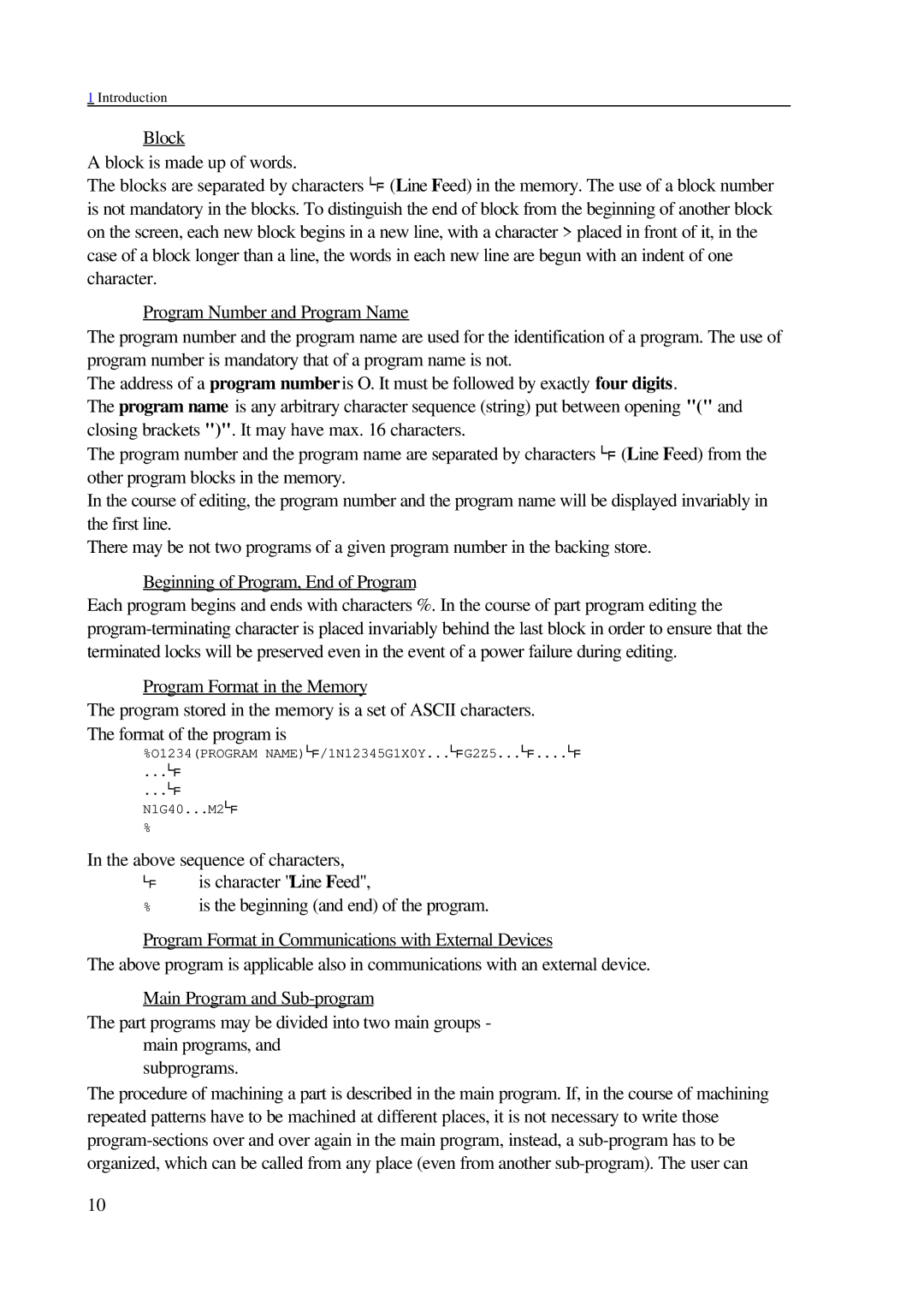1Introduction
Block
A block is made up of words.
The blocks are separated by characters s (Line Feed) in the memory. The use of a block number is not mandatory in the blocks. To distinguish the end of block from the beginning of another block on the screen, each new block begins in a new line, with a character > placed in front of it, in the case of a block longer than a line, the words in each new line are begun with an indent of one character.
Program Number and Program Name
The program number and the program name are used for the identification of a program. The use of program number is mandatory that of a program name is not.
The address of a program number is O. It must be followed by exactly four digits.
The program name is any arbitrary character sequence (string) put between opening "(" and closing brackets ")". It may have max. 16 characters.
The program number and the program name are separated by characters s (Line Feed) from the other program blocks in the memory.
In the course of editing, the program number and the program name will be displayed invariably in the first line.
There may be not two programs of a given program number in the backing store.
Beginning of Program, End of Program
Each program begins and ends with characters %. In the course of part program editing the
Program Format in the Memory
The program stored in the memory is a set of ASCII characters.
The format of the program is
%O1234(PROGRAM NAME)s/1N12345G1X0Y...sG2Z5...s....s
...s
...s
N1G40...M2s
%
In the above sequence of characters,
sis character "Line Feed",
%is the beginning (and end) of the program.
Program Format in Communications with External Devices
The above program is applicable also in communications with an external device.
Main Program and
The part programs may be divided into two main groups - main programs, and
subprograms.
The procedure of machining a part is described in the main program. If, in the course of machining repeated patterns have to be machined at different places, it is not necessary to write those
10
